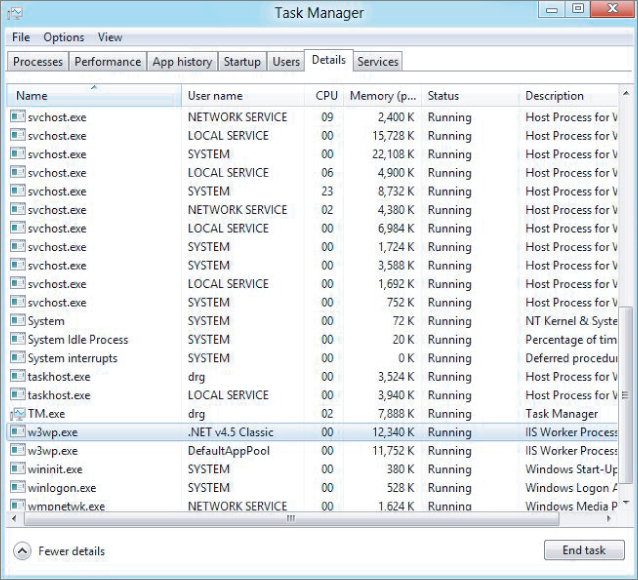Understanding the w3wp.exe Process
Each application pool runs in its own worker process within the operating system so that there is complete separation between application pools. This also allows a specific user identity to be assigned to each worker process for security reasons.
The w3wp.exe worker process runs in user-mode and processes requests for content for each application pool.
Figure 8.4 shows two w3wp.exe worker processes, one for each of two application pools. The web pages are executed within these processes.
Get Professional Microsoft IIS 8 now with the O’Reilly learning platform.
O’Reilly members experience books, live events, courses curated by job role, and more from O’Reilly and nearly 200 top publishers.


